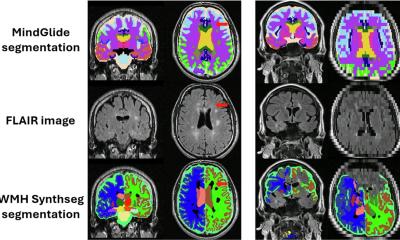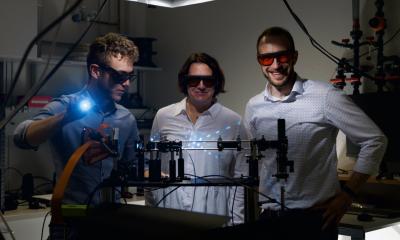Distribution
Grabbing multiple sclerosis by the nose
Over the next few years, in a research project funded by the EU, an international consortium is developing a new technology for a better treatment of multiple sclerosis. The idea of the innovative “Nose2Brain” approach is to transport a special active substance directly through the nose into the central nervous system.

For this purpose, the Fraunhofer Institute for Interfacial Engineering and Biotechnology IGB is working on an active ingredient formulation which is introduced direct into the Regio olfactoria by means of a special applicator and which can release the active ingredient there over a prolonged period of time.
Medically active substances are normally distributed via the blood – either directly by injection into the bloodstream or indirectly, for example through the digestive tract after oral administration. In many diseases, however – for example of the central nervous system – it is of decisive importance to transport the active substance as efficiently as possible to the required target site. An example of this is the treatment of multiple sclerosis, where the pharmaceutical agents have to produce their effect above all in the central nervous system. However, this is especially difficult to achieve in the usual way via the blood due to special protective mechanisms such as the blood-brain barrier.
Through the nose direct into the brain
Within the scope of the EU-funded “N2B patch” cooperative project, Fraunhofer IGB is therefore participating in the development of a medical form of therapy that delivers the drug via the Regio olfactoria. The aim of this alternative approach is to enable an active substance to circumvent the path through the bloodstream and to reach the brain directly. Here the brain, together with the surrounding liquid, is only separated from the nasal cavity by the ethmoid bone and some cell layers. The active agent can easily penetrate this barrier and reach the brain directly taking a short route. The therapeutic system will consist of the active agent itself, of a formulation containing the active agent, a hydrogel as carrier material for the formulation, and a suitable applicator for inserting the patch in the nose. The active agent is a biomolecule that stimulates the regeneration of nerve cells.
In the project the scientists at Fraunhofer IGB are concentrating on the formulation of the particles containing the active agent, and on inserting these particles into the gel. The project consortium is developing a special applicator to introduce the gel into the nose. The device is a combination of a standard endoscope and a special mixing system. This system is necessary as the target site is difficult to reach and an already solidified gel could not be deposited in the correct place. The liquid precursors of the gel therefore have to be transported separately to the olfactory epithelium inside the nose. There the various components combine to form a gel with the required consistency, so that the patch remains securely in place.
As the olfactory epithelium is difficult to reach, the gel patch should be applied by a doctor, not by the patients themselves. The active agent will then be released over an extended period of time, so there is then no need to remove the patch again. A new one is simply inserted in the case of long-term treatment.
Source: Fraunhofer-Institut für Grenzflächen- und Bioverfahrenstechnik IGB
01.05.2017










